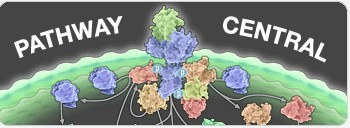
产品详情
文献和实验
相关推荐
服务名称 :pcr芯片
提供商 :上海英拜
AMPK信号通路PCR芯片可用于研究与AMPK信号通路相关的84个基因的表达情况。| Product | Species | Technology | Cat. No. |
| AMPK Signaling PCR Array | Human | Gene Expression | PAHS-175Z |
| AMPK Signaling PCR Array | Mouse | Gene Expression | PAMM-175Z |
| AMPK Signaling PCR Array | Rat | Gene Expression | PARN-175Z |
| AMPK Signaling PCR Array Pig Gene Expression PASS-175Z | |||
The Human AMPK Signaling RT² Profiler PCR Array profiles the expression of 84 key genes involved in signal transduction by the AMP-activated protein kinase complex (AMPK). AMPK is a heterotrimeric complex composed of a catalytic alpha subunit and regulatory beta and gamma subunits. AMP binds the regulatory gamma subunit to allosterically open the alpha subunit for phosphorylation and activation by LKB1 (STK11) or calcium/calmodulin-dependent protein kinases (CAMKK). Cellular stresses that inhibit ATP production (such as low glucose, hypoxia, ischemia, and heat shock), hormone signaling (via AKT and PI3 kinase), and cAMP-dependent protein kinase all activate AMPK complex. AMPK activity then stimulates ATP synthetic processes (such as fatty acid oxidation and autophagy) and suppresses ATP consumptive processes (such as gluconeogenesis, lipid synthesis, and protein synthesis). AMPK signaling exerts its control at both the post-translational and transcriptional levels by phosphorylating either the proteins directly involved in these processes or the transcription factors regulating their expression, respectively. Its role in controlling both glucose and lipid metabolism makes AMPK a potential therapeutic target for treating type II diabetes mellitus, obesity, and cancer. AMPK also plays critical roles in models of aging by modulating mTOR signaling. Analyzing the expression of AMPK signaling genes can help to clarify its role in these normal and pathophysiological processes at themolecular level. The genes on this array encode the components of the kinase complex itself, its upstream regulators, and its targets in several key biological processes. A set of controls present on each array enables data analysis using the ΔΔCT method of relative quantification and assessment of reverse transcription performance, genomic DNA contamination, and PCR performance. Using real-time PCR, research studies can easily and reliably analyze the expression of a focused panel of genes responsive to AMPK signaling with this array.
Receptors:
Alpha Adrenergic Receptors: ADRA1A, ADRA1B, ADRA1D, ADRA2A, ADRA2B, ADRA2C.
Hormone Receptors: ADIPOR1, ADIPOR2, INSR, LEPR.
Nicotinic Receptors: CHRNA1, CHRNB1.
Adenylate Kinases: AK1, AK2, AK3.
AKT / PI3K Signaling: AKT1, AKT2, AKT3, PDPK1.
Calcium / Calmodulin Signaling: CAMKK1, CAMKK2.
AMP-Activated Protein Kinases:
AMPK Catalytic Subunits: PRKAA1, PRKAA2.
AMPK Regulatory Subunits: PRKAB1, PRKAB2, PRKAG1, PRKAG2, PRKAG3.
cAMP-Dependent Protein Kinases:
PKA Catalytic Subunits: PRKACA, PRKACB.
PKA Regulatory Subunits: PRKAR1A, PRKAR1B, PRKAR2A, PRKAR2B.
Protein Phosphatases:
Catalytic Subunits: PPP2CA, PPP2CB.
Non-Catalytic Subunits: PPP2R1A, PPP2R1B, PPP2R2B, PPP2R4.
Autophagy: ATG13, RB1CC1, ULK1.
Fatty Acid Metabolism: ACACA, ACACB, CPT1A, CPT1B, CPT1C, CPT2, FASN, GPAM, GPAT2, HMGCR, LIPE, MLYCD, P
NPLA2.
Glucose Metabolism: GYS1, GYS2, PFKFB1, PFKFB2, PFKFB3, PFKFB4, SLC2A4.
mTOR Signaling: CAB39, MTOR, RPTOR, STK11, STRADA, STRADB, TSC1, TSC2.
Protein Synthesis: EEF2K, EIF4EBP1, RPS6KB1, RPS6KB2.
Transcriptional Regulation: CRTC2, CRY1, ELAVL1, FOXO3, HNF4A, PPARGC1A, PPARGC1B, SREBF1, TP53.

上海英拜生物科技有限公司
实名认证
钻石会员
入驻年限:13年










